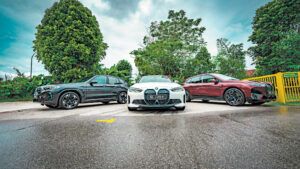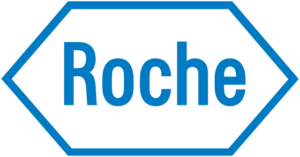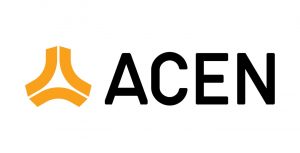The i’s have it

THE MONTH of October is curiously bookended by two ultimately related events. Toward its end was the 10th Philippine Electric Vehicle Summit (which we wrote about at length last week); the other an interesting drive in Singapore for a handful of us motoring journalists.
Our group had ample time aboard and at the wheel of three pure-electric vehicles (whose nomenclatures are predicated by an “i” to denote this): the BMW iX (launched in the Philippines last April), and two yet to arrive in the market — the i4 sedan and the iX3.
In a briefing at our hotel before hitting the road, BMW Group Asia Senior Product and e-Mobility Manager Alan Yi reminded us about BMW Group CEO Oliver Zipse’s recent words, perhaps appropriately encapsulating why we were at the prosperous island state for this drive: “We want to become the world’s most sustainable automaker,” Mr. Zipse had said this ahead of the IAA (Internationale Automobil-Ausstellung) Mobility last year, where the brand made “circular economy and sustainable urban mobility” its theme for the auto exhibition. “How much can we reduce the CO2 footprint of vehicles over their entire life cycle? To this end, we are setting ourselves transparent and ambitious targets for substantially reducing CO2 emissions,” the executive continued.
Speaking of electric vehicles (EVs), BMW actually had a working all-electric prototype way back in 1972 — a 1602e deployed to the Munich Olympics as a camera car. The decision to go electric even back then wasn’t whimsical. Since the vehicle would be around athletes, it behooved BMW to field one that wouldn’t be belching unhealthy fumes on their faces.
Fast-forward to the present, the Germany-headquartered premium brand’s aspirations are clear as they are measurable: sustainability through the slashing of emissions by 40% across the lifecycle of vehicles it rolls out from 2019 to 2030. Carbon dioxide output is to be cut by 20% in its supply chain, by 80% in production, and by 50% in the “use phase.” This includes the Mini brand, which BMW has owned since 1996. Meanwhile, BMW Group plant production has also been made carbon-neutral, and a share of secondary materials (above 30% today) will be increased to 50%.
These developments are neither happening in a vacuum nor merely on snazzy PowerPoint presentations. In fact, just last April, SMC Asia Car Distributors Corp. (or BMW Philippines) brought in the iX all-electric SAV (or Sports Activity Vehicle, the brand’s term for SUV). We’ve heard it’s been selling relatively well, notwithstanding the industry-wide supply chain and parts challenges.
BMW Group Asia — which oversees 14 markets, including the Philippines — said to expect the iX3 SAV to join the iX. The exact timing will be left to BMW Philippines, of course. Its officials hope to unveil the model before the end of the year.
Over dinner, BMW Group Asia Managing Director Lars Nielsen told us that the Philippines will be only the fourth market in the area (following Singapore, Thailand, and Malaysia), to get the iX3. “Velocity” asked him what the brand sees in our market for that kind of confidence in launching full electrics.
Mr. Nielsen cited regulations, our country’s goals, and ranking in the region in terms of readiness and even adoption rate. The Danish executive described electrification as a “chicken-and-egg” situation, though. One can’t simply just wait for the tipping point. You could say it’s about, well, taking charge.
For now, we can only dream about the kind of charging infrastructure that Singapore boasts. Its largest EV charging network, Bluecharge, has some 1,500 charging points in the country. This ties in with the national aspiration to have at least 60,000 of them by 2030.
Still, Mr. Nielsen believes that discussions on the ground, as well as relevant legislation (such as EVIDA) are promising and tangible evidence that EVs are set to take off in the Philippines. Having said that, automakers like BMW are also not sitting on their thumbs while waiting for an ideal situation. “You should have a charging solution with you,” he said. In case of a charging point unavailability, the so-called BMW Flexible Charger can plug into a domestic socket outlet.
And while range anxiety remains a relevant pain point, battery technology is evolving all the time and the distance between charges is ever-lengthening.
Back to the BMW iX3, I suspect this is an EV sleeper — particularly if it’s priced right. Sharing bones with the ICE-powered X3 (which effectively becomes the first BMW to be offered in four different drivetrains [diesel, BEV, PHEV, and gasoline]), the iX3 is powered by a 400V lithium-ion battery hooked up to the brand’s proprietary eDrive system. An electric motor generates 286hp and 400Nm. Consumption is estimated at 19.4kWh/100km — for a claimed electric range of 450 to 459 kilometers. Sprightly performance is evidenced by a standstill-to-100kph time of 6.8 seconds — up to an electrically governed 180kph. Using a DC/150kW charger, enough juice can be put in for 100 kilometers in just 10 minutes. Using a home-installed Wallbox, BMW claims, gets zero-to-100% charging done in 7.5 hours.
The company’s sustainability goals are also expressed in the production of the iX3. BMW is said to make the model using CO2-free electricity, and its electric motor doesn’t employ rare earth materials. “Magnets are not as sustainable,” declared Mr. Yi.
Additionally, he shared that BMW has been working on its batteries in-house since 2008, leading to “further optimization of the interaction among the electric motor, transmission, power electronics, and battery… This is an expertise not left to outsiders.”
The earnest work and attention the company has been putting into its battery tech has been reaping dividends such as “silent operation, balance between high peak power and stable torque even at high rpm,” reported Mr. Yi.
Engineers and designers have also worked to develop a modular design for the high-voltage battery — allowing a good package and stacking potential.
For the end user, the iX3 strikes a very different ethos from the previously launched iX. While the iX is a study in futuristic styling and elements, the iX3 is pretty similar to the garden-variety X3. And that surely will help make it more palatable for browsers who are looking for a more “normal-looking” BMW. It’s pretty much the blue-colored accents that give away its electric nature.
The iX and i4 sedan, on the other hand, look like concept vehicles which underscore the arrival of the future through design execution that leaps rather than progressively evolves. Taken as a whole, this triumvirate doesn’t just embody the electric and sustainability goals for BMW but, really, another litmus test of our country’s readiness to make the switch.
Not to be all Inception about it, but there are choices within the choice.




